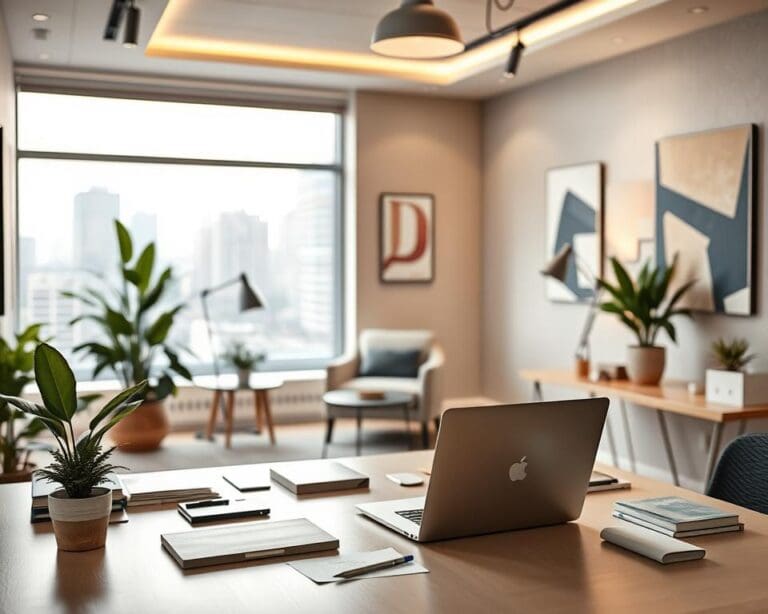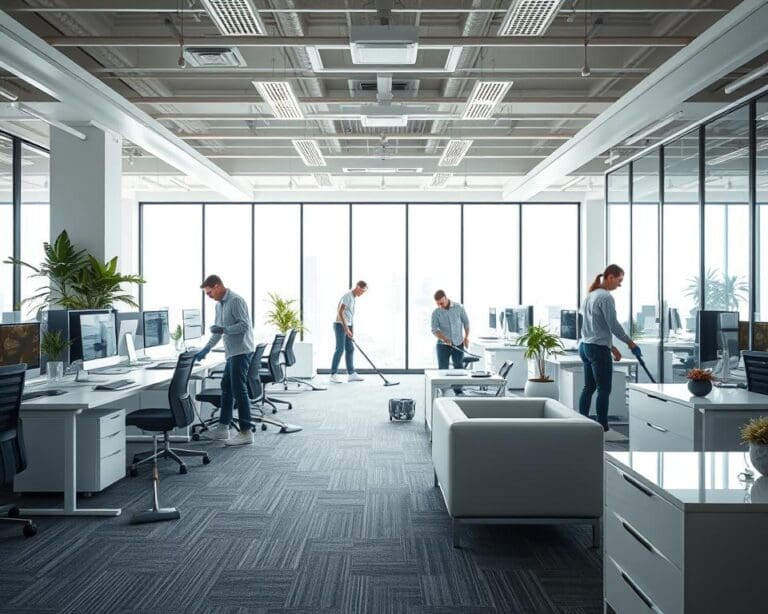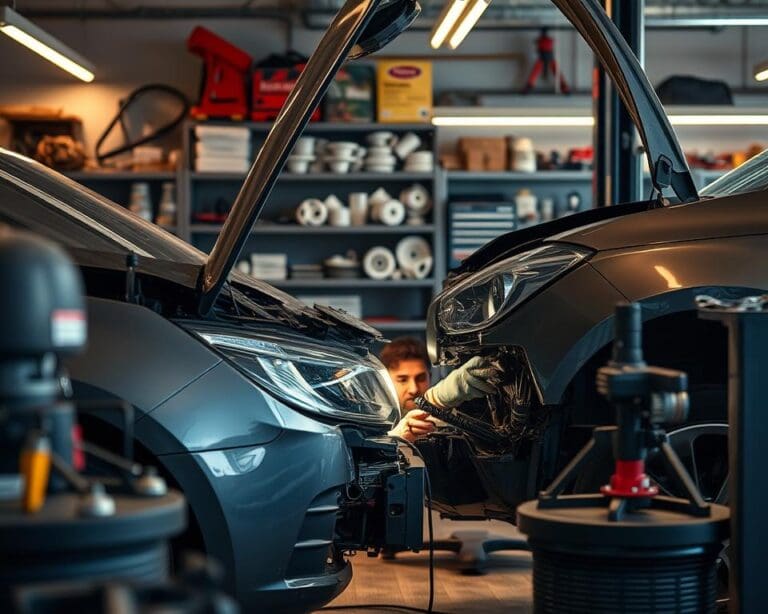Creating a modern bathroom design is about more than just aesthetics; it’s about crafting a space that is both functional and luxurious. A well-designed bathroom can elevate your daily routine, providing a serene escape from the hustle and bustle of everyday life. With practical bathroom ideas, you can achieve a bathroom renovation that is both stylish and functional.
For inspiration on how to bring your bathroom up to date, consider exploring the latest trends and ideas. You can find great ideas on our page about modern bathroom inspiration, which showcases the latest in bathroom renovation.
Key Takeaways
- Modern bathroom design combines functionality with luxury.
- Practical bathroom ideas can enhance your daily routine.
- A well-planned bathroom renovation can increase your home’s value.
- Staying updated with the latest trends can inspire your design.
- Incorporating sustainable options is a growing trend.
The Fundamentals of Modern Bathroom Design
The essence of modern bathroom design lies in its ability to seamlessly merge aesthetics with everyday practicality. A well-designed bathroom is not just visually appealing; it’s also highly functional and comfortable.
Balancing Aesthetics with Everyday Functionality
To achieve a balance between aesthetics and functionality, consider the following elements:
- Minimalist Design: Emphasizing simplicity and clean lines to create a serene atmosphere.
- Smart Technology: Integrating innovative features like heated floors and touchless faucets for enhanced convenience.
- Sustainable Materials: Using eco-friendly materials that are not only good for the environment but also add a unique touch to your bathroom.
By incorporating these elements, you can create a bathroom that is both stylish and functional, meeting your daily needs while providing a relaxing retreat.
Key Elements That Define Contemporary Bathrooms
Contemporary bathrooms are characterized by several key elements, including:
- Open Spaces: Utilizing open layouts to create a sense of spaciousness and ease of movement.
- High-Quality Fixtures: Investing in premium fixtures that are both durable and aesthetically pleasing.
- Advanced Lighting: Implementing layered lighting solutions to enhance ambiance and functionality.
These elements work together to define the modern bathroom, creating a space that is both beautiful and functional.
Assessing Your Bathroom Space and Personal Needs
A successful bathroom renovation begins with a thorough assessment of your bathroom space and an understanding of your daily routines. This initial step is crucial in creating a bathroom that is both functional and aesthetically pleasing.
Taking Accurate Measurements of Your Space
To start, take precise measurements of your bathroom, including the location of plumbing fixtures, electrical outlets, and any windows or doors. Accurate measurements will help you plan a layout that maximizes space and minimizes potential issues during renovation.
Analyzing Your Daily Bathroom Routines
Consider how you use your bathroom on a daily basis. Think about your morning routine: Do you need a double sink? Is a separate shower and bathtub essential for your lifestyle? Understanding your habits will guide your decisions on the necessary features and layout.
Establishing a Realistic Budget and Timeline
Determine a realistic budget for your renovation, considering materials, labor, and any necessary permits. Similarly, establish a timeline that accounts for potential delays and ensures a smooth renovation process.
By carefully assessing your bathroom space, understanding your needs, and planning your budget and timeline, you set the foundation for a successful renovation that results in a modern, functional bathroom.
Hoe richt je een moderne badkamer praktisch in? A Comprehensive Guide
To achieve a modern bathroom that is both beautiful and functional, it’s essential to focus on layout, theme, and implementation strategy. A well-planned bathroom renovation can significantly enhance the overall aesthetic and functionality of the space.
Creating an Efficient Layout Plan
An efficient layout is crucial for a practical bathroom. It involves optimizing the available space to ensure ease of movement and functionality.
Zoning Your Bathroom for Optimal Flow
Zoning your bathroom into areas for different activities, such as showering, grooming, and storage, can enhance the overall flow and usability of the space.
Maximizing Small Spaces with Smart Design
For smaller bathrooms, using wall-mounted fixtures and compact designs can help maximize space without compromising on style or functionality.
Selecting a Practical Yet Stylish Design Theme
Choosing a design theme that balances practicality with style is vital. Consider themes that incorporate durable, water-resistant materials and sleek designs.
| Design Theme | Practical Benefits | Style Elements |
|---|---|---|
| Modern Minimalist | Easy to clean, less clutter | Simple lines, monochromatic colors |
| Luxury Spa | High-end materials, comfortable | Rich textures, elegant fixtures |
Developing a Phased Implementation Strategy
A phased implementation strategy allows for a smoother renovation process. It involves prioritizing tasks, managing resources, and minimizing disruptions.
By focusing on these key areas, you can create a modern bathroom that is both practical and aesthetically pleasing.
Innovative Storage Solutions for the Modern Bathroom
Innovative storage solutions are the backbone of a practical and stylish modern bathroom, helping to keep clutter at bay. A well-designed bathroom not only looks great but also functions efficiently, making the most of the available space.
Wall-Mounted and Vertical Storage Options
Wall-mounted and vertical storage options are ideal for maximizing space in smaller bathrooms. These solutions can include tall cabinets, shelves, and even wall-mounted vanities that keep the floor clear and create a sense of openness.
By utilizing the vertical space, homeowners can store essentials like towels, toiletries, and cleaning supplies without encroaching on the limited floor area.
Concealed and Recessed Storage Compartments
Concealed and recessed storage compartments offer a sleek and sophisticated way to store bathroom essentials. These can be achieved through recessed medicine cabinets or hidden compartments behind mirrors and decorative elements.
Such storage solutions maintain the bathroom’s aesthetic appeal while keeping necessary items within easy reach.
Multi-Functional Furniture and Fixtures
Multi-functional furniture and fixtures are becoming increasingly popular in modern bathroom design. These pieces serve more than one purpose, combining functionality with style.
Vanities with Integrated Storage
Vanities with integrated storage are a prime example of multi-functional furniture. They provide a place for grooming while storing toiletries, towels, and other essentials, keeping the bathroom organized.
Dual-Purpose Mirrors and Cabinets
Dual-purpose mirrors and cabinets are another innovative solution. They can serve as a mirror, a storage unit, or even incorporate lighting, enhancing both the functionality and ambiance of the bathroom.
Selecting Practical Fixtures for Modern Bathrooms
The selection of bathroom fixtures plays a significant role in creating a modern, practical, and comfortable space. Modern bathrooms demand fixtures that are both stylish and functional. The right choices can enhance the overall user experience, making daily routines more efficient and enjoyable.
Space-Efficient Toilet Designs and Placement
Toilets have evolved significantly, with modern designs focusing on water conservation and space efficiency. Wall-mounted toilets, for instance, not only save floor space but also create a sleek, contemporary look. When planning the placement, consider the bathroom’s layout to ensure easy access and sufficient clearance.
Functional Sink and Vanity Configurations
The sink and vanity area is a critical component of any bathroom. Modern designs often feature wall-mounted vanities that provide additional storage without overwhelming the space. Choosing a sink that complements the vanity and overall bathroom design is crucial, with options ranging from undermount to vessel sinks.
Shower vs. Bathtub: Practical Considerations
Deciding between a shower and a bathtub depends on personal preference, available space, and practical needs. While some prefer the luxury of a bathtub, others may opt for a shower due to its convenience and water efficiency.
Walk-in Shower Benefits and Design
Walk-in showers are celebrated for their accessibility and modern appeal. They can be customized with various features like rainfall showerheads and seating areas, enhancing the overall shower experience.
Space-Saving Tub Options
For those who prefer bathtubs, there are space-saving designs available, such as corner tubs or compact soaking tubs, which can fit into smaller spaces without compromising on comfort.
Hardware That Combines Style with Durability
Bathroom hardware, including faucets and drawer handles, should not only be stylish but also durable and resistant to moisture. Materials like brushed nickel or chrome are popular for their durability and aesthetic appeal.
Strategic Lighting for a Functional Modern Bathroom
A well-designed lighting plan can transform a bathroom into a haven of comfort and functionality. Strategic lighting not only enhances the aesthetic appeal of the bathroom but also improves its usability.
Essential Task Lighting for Daily Activities
Task lighting is crucial for daily activities such as grooming and applying makeup. LED strip lights around the mirror or vanity area provide focused lighting, reducing shadows and improving visibility. This type of lighting is not only functional but also adds a modern touch to the bathroom.
Ambient Lighting for Comfort and Atmosphere
Ambient lighting sets the tone for the overall atmosphere of the bathroom. Options like recessed lighting or soft glow LED lights can create a relaxing ambiance, making the bathroom a serene retreat. Ambient lighting can be adjusted to suit different moods and needs.
Energy-Efficient and Sustainable Lighting Solutions
Energy efficiency is a key consideration in modern bathroom lighting. LED lights are a popular choice due to their low energy consumption and long lifespan. Additionally, smart lighting systems can be programmed to optimize energy use, further enhancing sustainability.
| Lighting Type | Purpose | Energy Efficiency |
|---|---|---|
| Task Lighting (LED Strip Lights) | Focused lighting for tasks | High |
| Ambient Lighting (Recessed Lighting) | Overall illumination and ambiance | Medium to High |
| Smart Lighting Systems | Programmable lighting for optimized energy use | High |
Practical Materials for Floors and Walls
The selection of practical materials for bathroom floors and walls is essential for creating a space that is both stylish and functional. When it comes to bathrooms, moisture resistance and ease of maintenance are paramount.
Water-Resistant and Low-Maintenance Flooring
Bathroom flooring needs to be both durable and resistant to water. Options like porcelain, ceramic, and vinyl are popular due to their water-resistant properties.
Porcelain vs. Ceramic vs. Vinyl Options
Porcelain and ceramic tiles are renowned for their durability and resistance to moisture. Vinyl, on the other hand, offers a more budget-friendly option with a variety of designs available.
Non-Slip Safety Considerations
Regardless of the material chosen, ensuring the floor is non-slip is crucial for safety. Look for tiles with textured surfaces or apply non-slip coatings.
Easy-to-Clean Wall Surfaces and Treatments
For walls, materials like glazed tiles or acrylic panels can provide a waterproof barrier that’s easy to clean. Choosing the right wall surface can significantly reduce maintenance.
Grout and Sealing Strategies for Longevity
Proper grouting and sealing are essential for preventing water damage. Using a high-quality grout and sealant can extend the life of your bathroom surfaces. Regular maintenance is still necessary to ensure longevity.
Effective Ventilation and Climate Control Systems
A well-designed bathroom isn’t just about aesthetics; it’s also about creating a comfortable and healthy environment through effective ventilation and climate control. Proper ventilation is essential for removing moisture from the air, reducing the risk of mold and mildew, and improving overall air quality.
Modern Ventilation Solutions for Moisture Management
Modern ventilation solutions are designed to efficiently manage moisture in the bathroom. Exhaust fans with high CFM (cubic feet per minute) ratings are effective at removing moist air, especially when used in conjunction with humidity-sensing controls that automatically adjust ventilation rates based on the bathroom’s humidity levels. Additionally, heat recovery ventilation (HRV) systems can be used to exchange stale, moist air for fresh, dry air while retaining heat energy.
“Proper ventilation is key to a healthy bathroom. It not only reduces moisture but also helps in minimizing the growth of mold and mildew.” –
Heated Floors and Towel Racks for Comfort
Heated floors and towel racks are not just luxurious amenities; they also contribute to a more comfortable bathroom experience. Heated flooring systems, such as hydronic or electric radiant floor heating, provide warmth underfoot, while heated towel racks ensure that towels are dry and warm. These features can be particularly appealing in colder climates or during winter months.
- Enhance comfort with heated floors and towel racks
- Improve bathroom ambiance with warm, dry towels
- Increase the perceived value of the bathroom with luxurious amenities
Humidity Control and Mold Prevention Techniques
Controlling humidity is critical in preventing mold growth and maintaining a healthy bathroom environment. Techniques include using dehumidifiers or ensuring that ventilation systems are adequately sized for the bathroom. Regular maintenance, such as cleaning exhaust fans and checking for leaks, is also crucial. By implementing these strategies, homeowners can significantly reduce the risk of mold and mildew.
Effective ventilation and climate control are vital components of a well-designed bathroom. By incorporating modern ventilation solutions, heated floors, and humidity control techniques, homeowners can create a bathroom that is not only stylish but also comfortable and healthy.
Smart Technology Integration for Modern Bathrooms
Smart technology is revolutionizing bathroom design, making it more efficient, sustainable, and luxurious. The integration of innovative devices and systems is transforming the bathroom into a high-tech oasis that enhances the user’s daily routine.
Digital Mirrors and Connected Displays
Digital mirrors are becoming increasingly popular in modern bathrooms. These mirrors can display a range of information, from the time and weather to news updates and calendar events. Some models even come with built-in Bluetooth speakers, allowing users to stream music or podcasts while getting ready.
Touchless Fixtures and Automated Systems
Touchless fixtures, such as faucets and toilets, are not only hygienic but also contribute to water conservation. Automated systems can control lighting, temperature, and even ventilation, creating a seamless and comfortable bathroom experience.
Water Conservation Technology and Smart Features
Water conservation is a critical aspect of modern bathroom design. Smart features like digital temperature controls and water usage monitoring systems play a significant role in reducing water waste.
Digital Temperature Controls
Digital temperature controls allow users to set their preferred water temperature, ensuring a comfortable showering experience while minimizing energy consumption.
Water Usage Monitoring Systems
Water usage monitoring systems track and display water consumption in real-time, helping users identify areas for improvement and make more informed decisions about their water usage.
| Smart Feature | Benefit | Impact |
|---|---|---|
| Digital Mirrors | Enhanced User Experience | Increased Convenience |
| Touchless Fixtures | Improved Hygiene | Reduced Water Consumption |
| Water Conservation Technology | Sustainable Practices | Lower Utility Bills |
Designing for Accessibility and Future Needs
As we age, our bathroom needs change, making it essential to design a space that is adaptable and safe for all ages. A bathroom that is accessible and functional for everyone is not just a matter of convenience; it’s a necessity for maintaining independence and quality of life.
Universal Design Principles for All Ages
Universal design principles aim to create spaces that are usable by everyone, regardless of age or ability. This includes features like wide walk-in showers, grab bars, and raised toilets, which can greatly enhance the usability of a bathroom. By incorporating these elements, homeowners can create a bathroom that is both stylish and functional for years to come.
Adaptable Features for Changing Life Circumstances
Life circumstances can change unexpectedly, and a bathroom that is adaptable can make a significant difference. Features such as adjustable shower heads and benches can be particularly useful. Moreover, installing curbless showers and ensuring that the bathroom layout allows for easy navigation can greatly enhance accessibility.
Safety Elements That Don’t Compromise Style
Safety elements are crucial in a bathroom, but they don’t have to compromise the aesthetic appeal. For instance, non-slip flooring and secure grab bars can be both functional and stylish. As one expert notes, “A safe bathroom is not just about functionality; it’s also about creating a space that is beautiful and enjoyable.” By choosing safety elements that align with the overall design theme, homeowners can achieve a balance between form and function.
Conclusion: Creating Your Ideal Practical Modern Bathroom
Designing a modern bathroom that is both stylish and practical requires careful planning and consideration of various elements. By assessing your space and personal needs, you can create an efficient layout that incorporates innovative storage solutions and practical fixtures.
A well-designed modern bathroom should also include strategic lighting, practical materials for floors and walls, and effective ventilation and climate control systems. Integrating smart technology can further enhance the functionality and comfort of your bathroom.
By applying the insights gained from this article, you can create a bathroom that not only meets your current needs but is also adaptable for future requirements. Whether you’re undertaking a bathroom renovation or simply looking to update your existing space, incorporating modern bathroom design principles and practical bathroom ideas can help you achieve your goals.
With careful planning and attention to detail, you can create a modern bathroom that is both beautiful and functional, enhancing your daily routine and adding value to your home.












